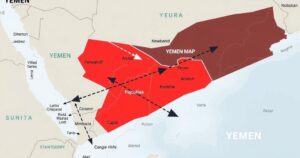Inequities of Power: Iran and the Axis of Resistance in Crisis

The February 6, 2025 panel at the Army University analyzed the state of Iran and the Axis of Resistance, debating its status as either a declining power or an evolving threat. Experts discussed major setbacks faced by the Axis, shifting regional dynamics, and the complexities of U.S.-Iran relations, emphasizing the importance of understanding local sentiments and the enduring aspirations of the Iranian people.
On February 6, 2025, the Army University’s Command and General Staff College Cultural and Area Studies Office convened a panel to explore the complex dynamics surrounding Iran and the Axis of Resistance, questioning whether it is a declining power or an evolving threat. Dr. Mahir J. Ibrahimov, the Director of CASO, emphasized the significance of this discussion amid ongoing challenges faced by the United States and its allies in relation to Iran.
Panelists included faculty members who provided insights on the cultural, political, and economic factors influencing Iran’s regional power and its historical relations with Western nations. Mark J. Bosse, Chair of Diplomacy Studies at CGSC, remarked, “It hasn’t been a good couple of years for Iran and the ‘Axis of Resistance.’” He highlighted the considerable setbacks the Axis has endured, particularly following the recent leadership losses in groups like Hamas and Hezbollah.
Yahya Sinwar, the Hamas leader responsible for the October 7 attacks on Israel, had sought to initiate a regional conflict to unify the Axis in its confrontation against Israel. However, the Axis has suffered significant casualties, losing key fighters and leadership. New leaders in Lebanon and Syria indicated a diminishing Iranian influence, while Houthi activities against shipping in the Red Sea have similarly diminished.
Bosse expressed that throughout its history, Iran has shown resilience in adapting to crises. He pointed to the growing anti-U.S. and anti-Israel sentiments propagated in previously neutral Oman media, explaining, “The unsaid pillar of the ‘Axis of Resistance’ is Iran’s ability to use its political, economic, and cultural influence to bring about results.” This adaptation is critical to understanding how Iran remains influential despite setbacks.
Dr. Tirdad Daei, a Senior Instructional Specialist at CGSC, provided historical context on the long-standing U.S.-Iran relationship, tracing it as far back as 1833. He pointed out that enduring hostility and mistrust, particularly after events like Operation Ajax in 1953 and the Iranian hostage crisis from 1979 to 1981, have characterized the relations between Iran and the West. Despite this, Daei noted a persistent admiration among the Iranian populace for American ideals of freedom and democracy.
The Iranian regime’s harsh crackdowns on peaceful protests have increased resentment among citizens who yearn for freedom. Daei highlighted the crucial divide between the Iranian people and their government, asserting that a better understanding of this dynamic is essential in formulating strategies for U.S. engagement with Iran.
The panel concluded that while Iran and the Axis of Resistance face significant challenges, especially in leadership and regional influence, their historical adaptability suggests a complex future. Despite recent losses, Iran’s resilience and the disconnect between the populace and the regime play pivotal roles in shaping both internal and external relations. Continuous monitoring and strategic engagement may be necessary to address these evolving dynamics effectively.
Original Source: www.dvidshub.net








